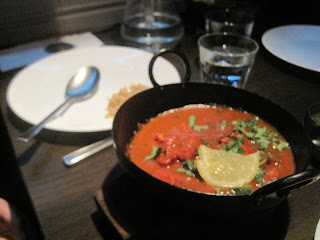Viterbo – The Pope Water springs
Everywhere I go, everywhere I look, I am surrounded by
history. It’s like I am cursed with seeing things from the past.
Well, I am finding myself in Viterbo, an Italian fortress
situated 80Km North of Rome, surrounded by the mountains: Monti Cimini and Monti Volsini. The place was
an Etruscan settlement called Surenna. The
Roman army destroyed the Etruscan centres but benefited greatly from this
civilisation.
The city is one the best preserved places in central Italy
in terms of architecture. The first
report of the city dates to the eighth century CE, when it is identified as
Castrum Viterbii. It was fortified in 773 by the Lombard King Desiderius in his
vain attempt to conquer Rome. When the popes switched to the Frankish support,
Viterbo became part of the Papal States, but this status was to be highly
contested by the emperors in the following centuries, until 1095 from which it
is known that it became a free commune (Wikipedia).
The entrance to the city is made through medieval gates and
the border is surrounded by stone walls dated from the 11th and 12th centuries
CE. Inside the walls, a new world has appeared. Paved streets, medieval
architecture, vintage shops, cafes, The Pope Palace (Pallazo dei Popi), the
Cathedral of St. Lorenzo, The Palazzo Comunale (begun 1460), Palazzo del
Podestà (1264), and Palazzo della Prefettura (rebuilt 1771) located on the
central square Piazza del Plebiscito. There are so many monuments in Viterbo,
to see and read the history of all of them you need to spend more than two
weeks.
Viterbo was one of the most preferred residences by Popes,
starting with Pope Eugene III (1145–1146). There are many churches and
religious artefacts, each of them having its own story. Walking on the streets,
you can meet people who hand out fliers and give information about the places
you walk by.
There are famous thermal hot springs (Terme dei Papi) in
Viterbo where the Pope used to bath. Gregory IX , Pope Bonifacio IX , Pope
Gregorio IX and Pope Pio II were healing and relaxing here. Today the springs
are open for everybody and it has a hospital based on thermal water and
mud recuperation. It is so amazing how hot this water is even in winter.
Today the city has developed around the medieval area with
modern flats and other modern buildings. There is an important Academy of Fine
Arts, the University of Tuscia, the Italian Army's Aviation Command
headquarters and Training Centre (Italian: Scuola marescialli dell'Aeronautica
Militare). The only airport close to the city, the Rome Viterbo Airport, is used
for military purposes. On 26 November 2007 Viterbo was chosen by the
authorities as the site of the next airport in Lazio to serve Rome.
Accommodation and entertainment is affordable in Viterbo. The
architecture is beautiful with a medieval feel, beer is 2 euros (1,5 euros for
a coffee, tea or hot chocolate), which is not much. A dinner out (with wine,
starter, main dish and desert) is around 40 euros. And they do very good sweets
which you must try once you are there. Hotels are between 40-120 euros and you
can find nice places to stay depending on your budget.
Kisses and hugs for you :* :)



































Comments
Post a Comment